Riga: From Refill to ALT/BAU - Temporary use as a tool for reactivating vacant buildings and areas
Edited on
20 May 2021ALT/BAU Project Manager Villiams Vrobļevskis shares his personal experiences in two URBACT Networks and how temporary use is applied as a tool for revitalising vacant buildings in Riga in his Transfer Story.
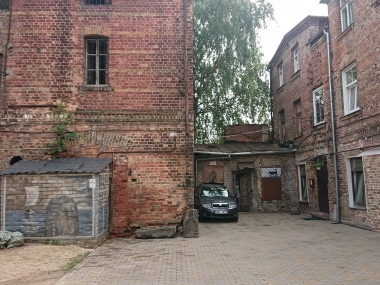
Introduction
The history of participation in URBACT projects for me dates back to 2017, when I was helping my colleagues in the URBACT Action Planning Network “Refill”.
Shortly after the Network “Refill” was finished, my colleagues were reached out for involvement and participation in another network - ALT/BAU. My involvement in the Refill Action Planning Network was evaluated and I was asked to be the project coordinator in the ALT/BAU Transfer Network. I agreed. I was very keen to continue to tackle problems and find other solutions for rehabilitation of the degraded properties and buildings in Riga. All the partners of ALT/BAU Transfer Network have similar issues with vacancy in their cities. There were a lot of things which we wanted to transfer and adapt in our city. I am grateful for the experience and knowledge which the Lead Partner, City of Chemnitz, gave us. The much needed focus and guidance was given.
Temporary use as a potential tool
Large degraded territories and beautiful vacant buildings are a problem for many cities in Europe, Riga is no exception in this matter. Previous experience in URBACT Action Planning Network “Refill” was all about finding ways how temporary use can be one of the best instruments to address the issues of derelict property. The first to apply interim use in Riga was the association “Free Riga” with unique experience and insight in this matter. The successful cooperation with "Free Riga" in the URBACT Network “Refill” led to another cooperation within the URBACT Network “ALT/BAU.”
There was a need to expand the newly started temporary use instrument further and, in this matter, URBACT ALT/BAU was the perfect project to establish something more independent. The experience from City of Chemnitz with addressing similar issues with creating and establishing an agency was the much needed thing in Riga as well.
In order to establish something similar and transfer the experience and knowledge from the City of Chemnitz an extensive work was needed to be done. There were many unknown things, many questions, and issues to deal with. And we were sure that temporary use and cooperation with association “Free Riga” could be a great start to all of this. As the temporary use as a tool was quite new and unknown in Riga, it was a double experience for many to participate in studying the temporary use as a tool and to participate in the URBACT ALT/BAU Network. Also the cooperation with association “Free Riga” went into the next level.
The owner as a major player
One of the first things which we defined to be a priority was to understand the issues and problems which the owners face. To achieve this, we came up with the idea of conducting a survey(link is external). Together with experienced members of "Free Riga" and with the experience of my colleagues we created a universal survey for owners which is aimed to understand the issues and reasons why their properties are empty and degraded. We asked what support would be needed from the municipality. Especially in terms of financial help, in support of various construction based consultations or other instruments. The results of the survey gives us a better insights in the problems and issues building owners are facing and improves the potential help through the adjustment in the support provided by the municipality and by adjusting the property strategy and politics.
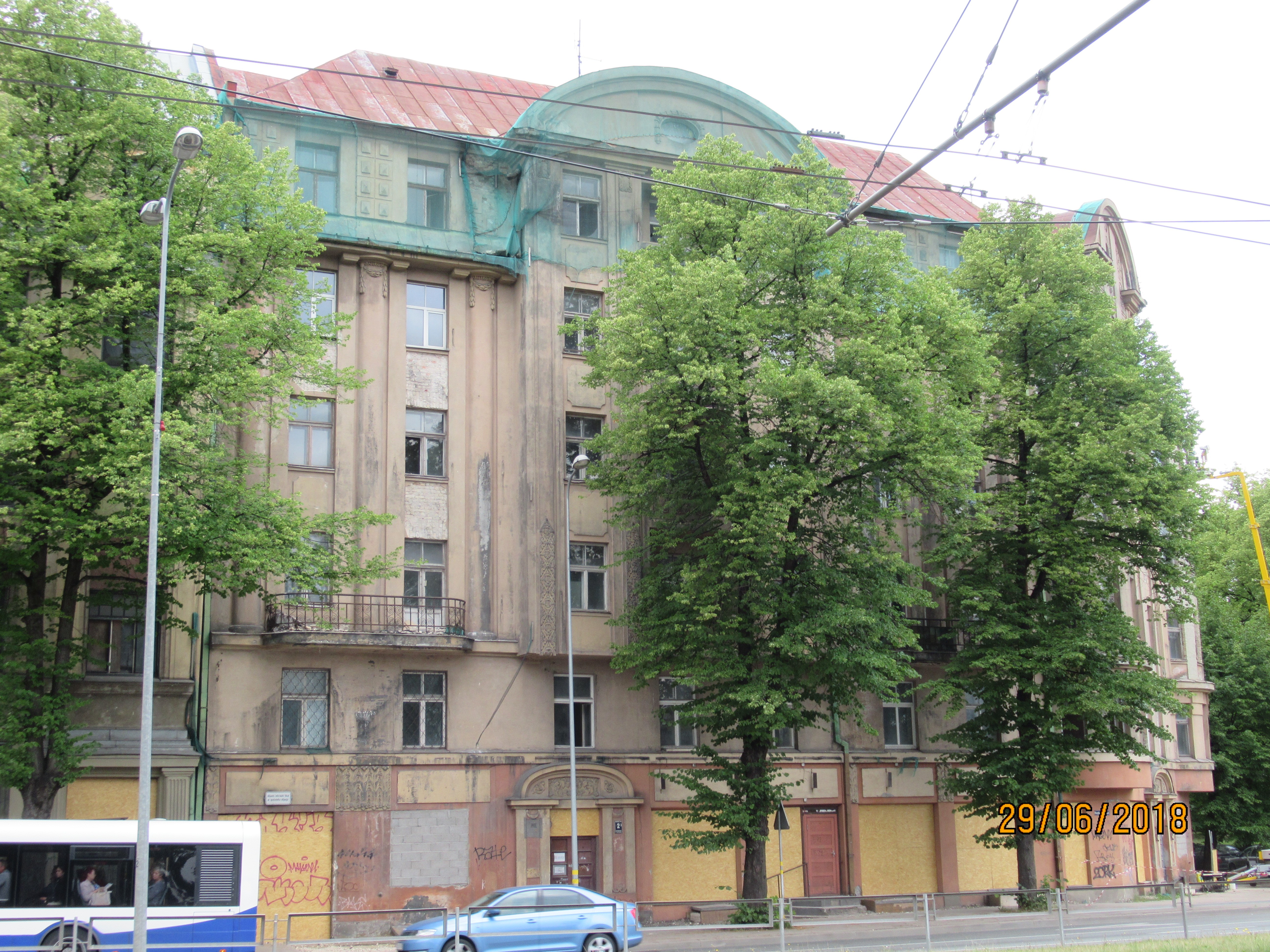

vacant building in Riga and a wide variety of building types in Riga
Temporary use - new challenge?
As already mentioned, the temporary use as a tool is quite new and unknown in the city of Riga. Association “Free Riga” is the only one who actively and successfully uses this tool in order to benefit the society, people and of course territories and buildings, by bringing them back to life. One of the first meetings in the project started with understanding and evaluating the existing tools for reactivation of degraded buildings and territories. We understood that we do not have any direct tool for reactivation of wasted territories or properties but that there were existing and successfully functioning indirect tools such as co-financing and public online mapping tools and the work of the independent association “Free Riga”.
The idea of creating a specific agency within the framework of URBACT ALT/BAU project was the first step and thing that was needed to start and implement temporary use as a valuable tool for reactivation of degraded territories and buildings. How ever there was a struggle and many issues on the road in order to find the right and most successful way to establish the agency, starting from defining the priorities and the work that could be done within the agency.
All the transnational meetings and also direct consultation with the Lead Partner and Lead Expert where very useful to find the first needed steps to establish such an agency and to find an alternative way to approach the issues with vacant areas and buildings. One of the most useful experiences, was to get to know an already established agency and its methods.
Every transnational meeting was dedicated to a specific part of establishing an agency. This allowed us to focus on the issues that were most problematic for us and help others in aspects that were already more developed in Riga. Individual one on one sessions also have given the needed support in the best possible implementation of the project. I always liked all the presentations given by the Lead Partner about their experience in contacting owners, that was a great and fun way to do it, with the right visual materials it was even better.
Regular meetings between members of Free Riga and the municipality and the link to a YouTube video about the project (https://www.youtube.com/watch?v=QCFmraWCnnw)
One of the most interesting things and in my opinion the best is the experience of many partners for the municipality to invest money directly in private property for rehabilitation of the buildings. The best example in this matter would be the experience of project partner in Vilafranca del Penedes, where the city administration invested in private property in order to provide social functions for respective time, depending on the size of the investment.
This would also be a perfect tool in Riga and could work in parallel with the indirect tools. However, the current and existing legislation does not allow for public sector to invest directly in private prop-erty. This means that in order to establish this tool, many things have to be done and changed in law. Additionally, I was very happy to introduce and share my experience with all the other partners of the project about the Riga tax tools, which shows to be very effective from both ways, as an instrument to penalize the inactive owners and as an instrument to support owners willing to act.
The support of URBACT
As my experience in the URBACT Networks and methods were not that big at the beginning of the project, I was a little bit nervous about it. However, from the help of many people involved in URBACT and ALT/BAU, I was always able to receive the needed support. The whole ideology and aim behind URBACT and his methods are fantastic and can help many cities to approach all kinds of problems.
Our matter was taking significant progress of finding alternative ways for reactivating vacant areas and decaying buildings. Transferring and adapting the practice of the City of Chemnitz would not work without the URBACT methods. Implementation and success of the project would not be possible without project locomotives - Lead Expert Nils Scheffler and Lead Partner Martin Neubert.
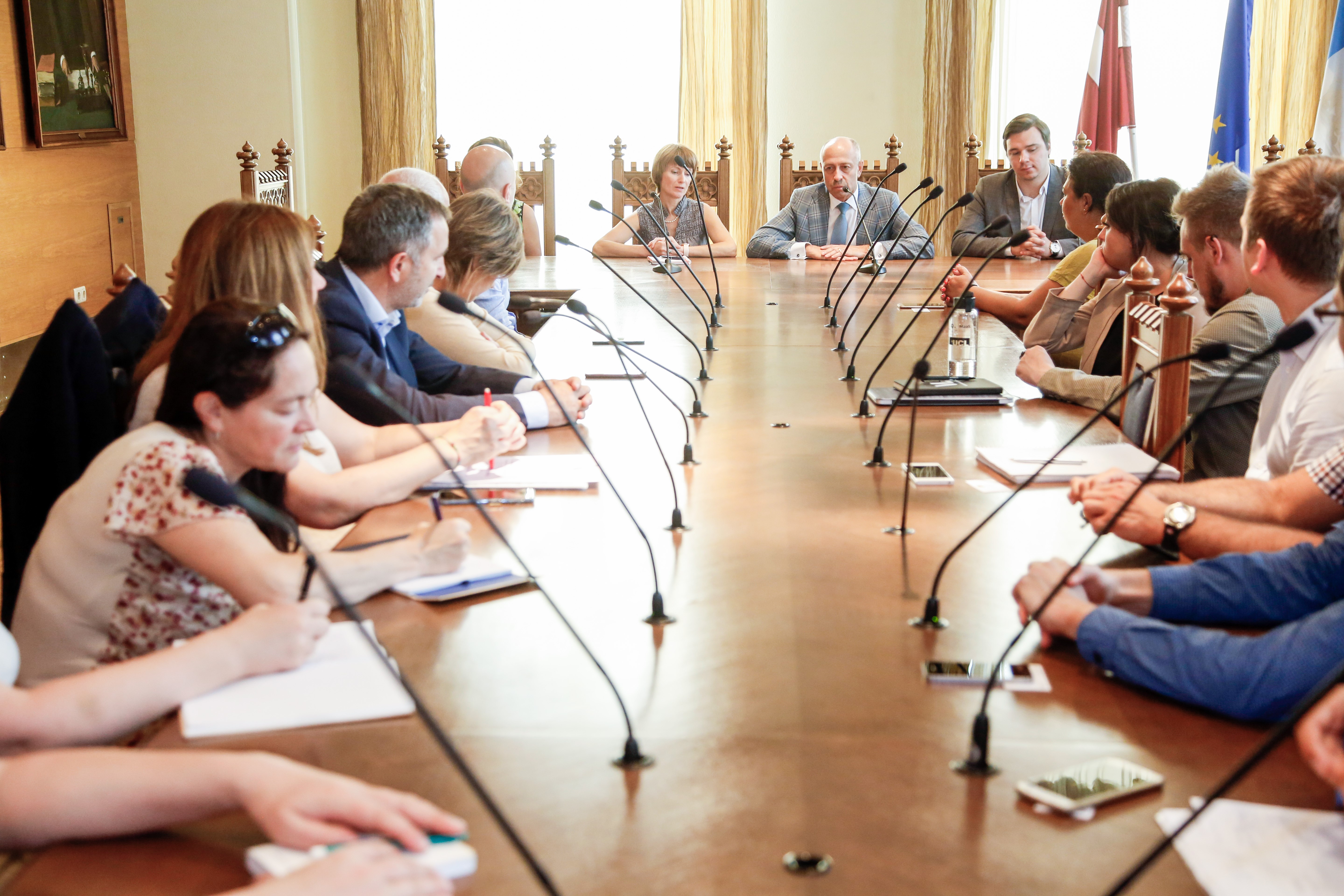
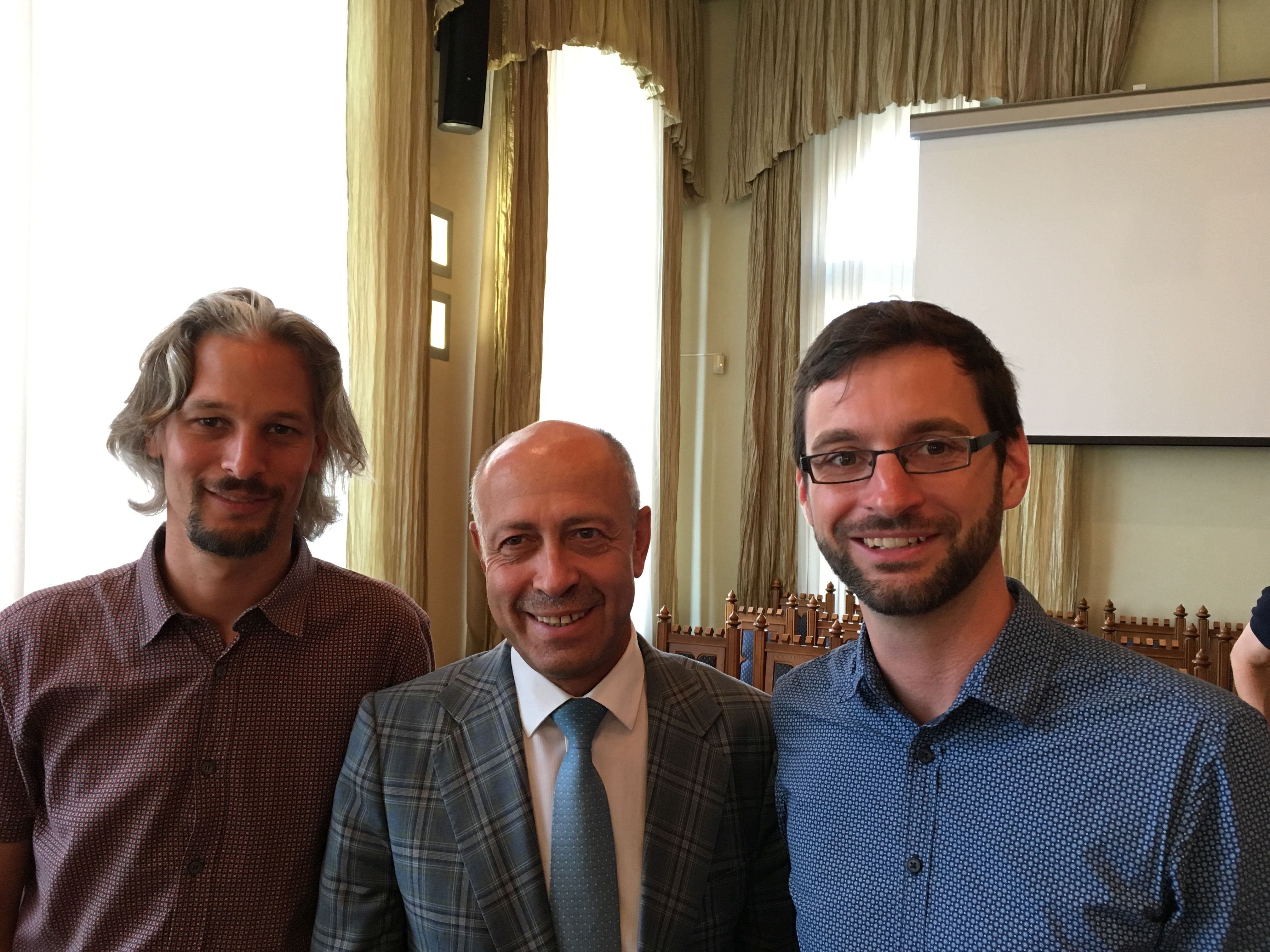
official opening of the Transnational Meeting in Riga - June 2019 - by the Deputy Mayor of Riga, selfie with the (Deputy) Mayor (Nils Scheffler, Martin Neubert)
The experience in the URBACT Transfer Network gave me many useful skills in my direct work and also for my personal growth. Without the participation in the URBACT programme and implement-ing the project with its method, the process of finding alternative ways to reactivate buildings would be much slower or even impossible.
Conclusions
The results and experience from participation in URBACT projects last for long. The participation in the URBACT ALT/BAU Network gave Riga the needed push and guidance in taking things to the next level, finding the best possible solutions for any arising issue, establishing new international contacts and also sharing our experience in the field of property reactivation. For me the good practice of the City of Chemnitz is very effective and I believe that more than just a few cities should learn from them.
The project would not be successful and that meaningful without the partners from Torino, Seraing, Vilafranca del Penedes, Constanta, Rybnik and Chemnitz. I also hope that the established connections and contacts will last and we will be able to meet each other and help each other outside the framework of the project in the future.
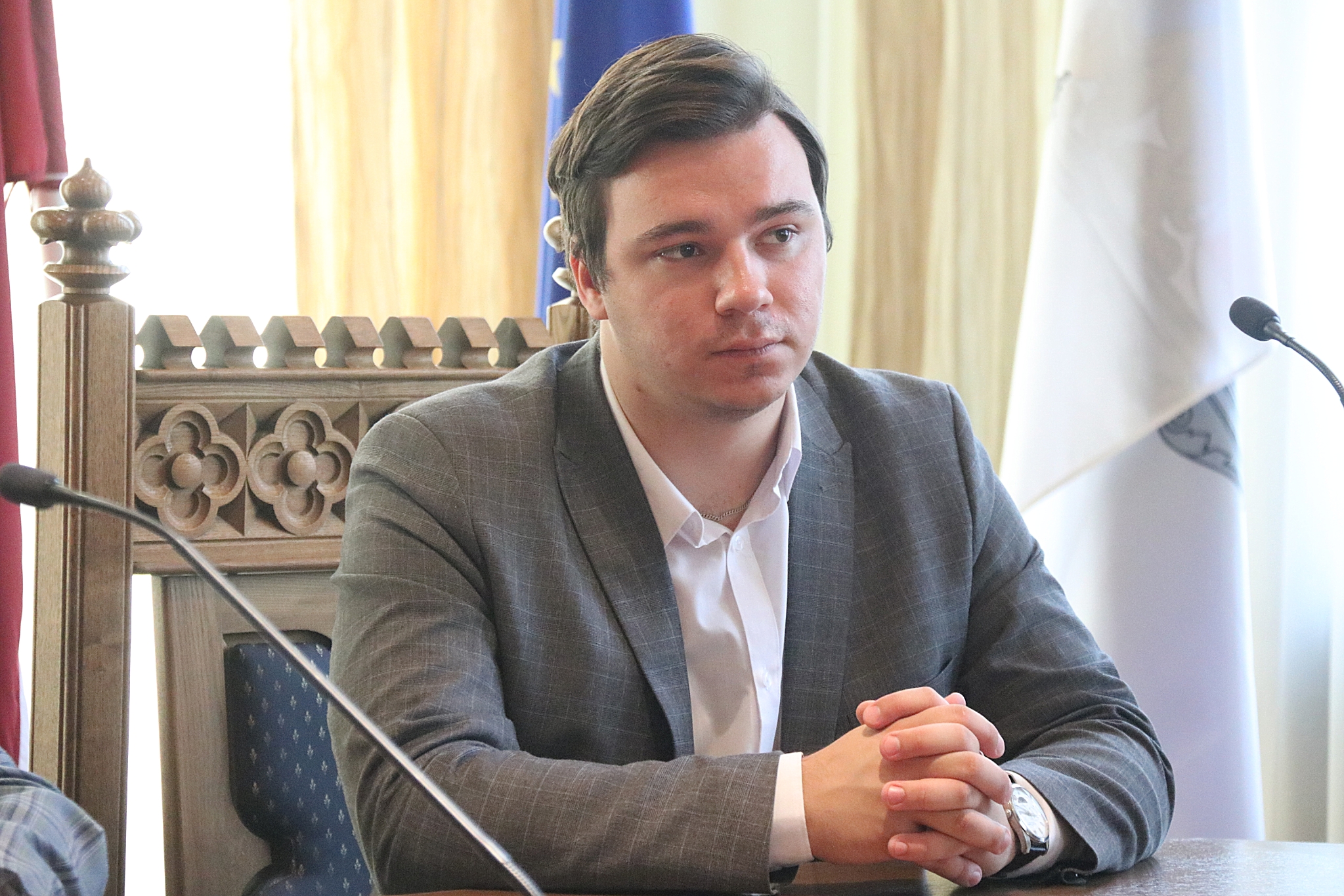
written by Villiams Vrobļevskis
Riga City Council Property Department
URBACT project coordinator Riga
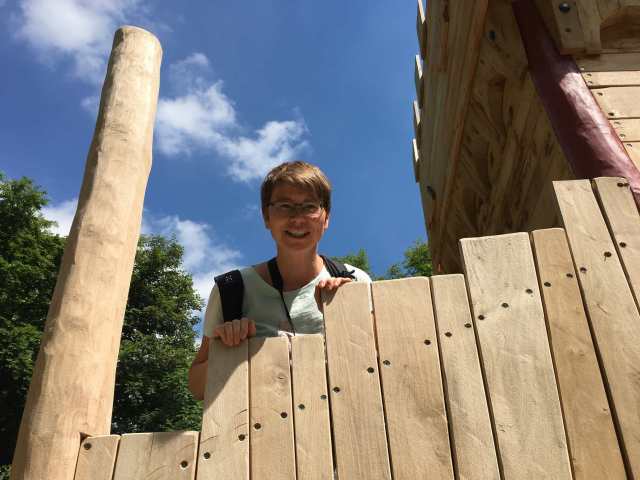 Submitted by sabine.hausmann on
Submitted by sabine.hausmann on


